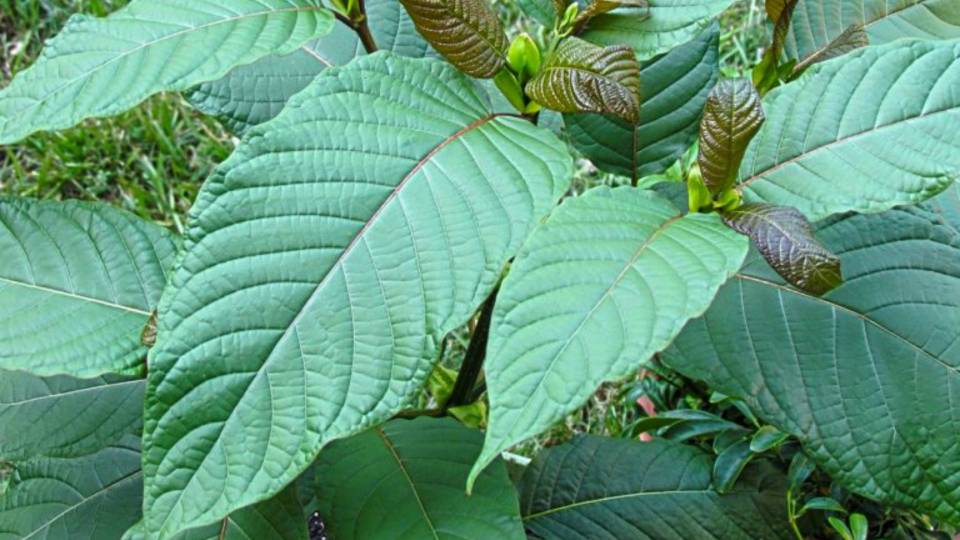Big Pharma’s Patents on Kratom Alkaloids Expose the REAL Reason DEA Is Banning This Plant
As the Free Thought Project reported last week, the U.S. Drug Enforcement Agency (DEA) just announced they will ban the popular pain relief supplement kratom by placing it on the Schedule 1 list, which denotes “no currently accepted medical use and a high potential for abuse” – the most restrictive classification under the federal Controlled Substances Act.
This move to ban yet another highly beneficial plant by the DEA has been met with heavy backlash and multiple petitions. The backlash is entirely justified as this plant has many amazing benefits — including a potential cure for opioid addiction.
A notice of intent to classify kratom was placed on the Federal Register on August 31, with plans to temporarily categorize the supplement as a Schedule I substance on September 30, according to a filing by the DEA:
Notice of Intent
The Administrator of the Drug Enforcement Administration is issuing this notice of intent to temporarily schedule the opioids mitragynine and 7-hydroxymitragynine, which are the main active constituents of the plant kratom, into schedule I pursuant to the temporary scheduling provisions of the Controlled Substances Act. This action is based on a finding by the Administrator that the placement of these opioids into schedule I of the Controlled Substances Act is necessary to avoid an imminent hazard to the public safety. Any final order will impose the administrative, civil, and criminal sanctions and regulatory controls applicable to schedule I controlled substances under the Controlled Substances Act on the manufacture, distribution, possession, importation, and exportation of, and research and conduct of instructional activities of these opioids.
This “imminent hazard,” as cited by the DEA, is all but non-existent. Yes, the CDC reported in July that kratom can be abused and that poison control centers have received over 660 calls between 2010 and 2015 regarding kratom intoxication. However, these numbers pale in comparison to the extreme death that follows prescription opioids, and, there has yet to be any conclusive evidence showing kratom to be deadly.
So why would the DEA worry about a beneficial plant that is pretty much harmless? The answer is quite clear — Big Pharma.
Cannabis is a schedule one substance but the pharmaceutical industry can manufacture a synthetic version of the same active ingredient in cannabis, THC, and it magically becomes legal.
Currently, the pharmaceutical industry is using kratom alkaloids to manufacture synthetic opioids.
As Cassius Kamarampi points out, three synthetic opioids, in particular, were synthesized from the alkaloids in kratom from 2008- 2016: MGM-9, MGM-15, and MGM-16.
They were synthesized from kratom’s alkaloids Mitragynine and 7-Hydroxymitragynine: to make what is essentially patentable, pharmaceutical kratom.
The first study, published in 2008, took Mitragynine and used it to synthesize “MGM-9”. The study says:
“Mitragynine is a major indole alkaloid isolated from the Thai medicinal plant Mitragyna speciosa that has opium-like properties, although its chemical structure is quite different from that of morphine. We attempted to develop novel analgesics derived from mitragynine, and thus synthesized the ethylene glycol-bridged and C10-fluorinated derivative of mitragynine, MGM-9 [(E)-methyl 2-(3-ethyl-7a,12a-(epoxyethanoxy)-9-fluoro-1,2,3,4,6,7,12,12b-octahydro-8-methoxyindolo[2,3-a]quinolizin-2-yl)-3-methoxyacrylate].”
The second study published in 2014 synthesized MGM-15 and MGM-16 from kratom’s other primary alkaloid, 7-Hydroxymitragynine. The study says:
“In this study, we developed dual-acting μ- and δ-opioid agonists MGM-15 and MGM-16 from 7-hydroxymitragynine for the treatment of acute and chronic pain.”
One can find dozens of studies from the past few years, in which researchers synthesized new opioid compounds and tested them on monkeys (primates). This is a huge market.
From one of many studies, testing the opioid “TH-030418”:
“Numerous efforts have been made on the chemical modification of opioid compounds, with the ultimate goal of developing new opioid analgesics that is highly potent and low/non-addictive. In a search for such compounds, TH-030418 [7α-[(R)-1-hydroxy-1-methyl-3-(thien-3-yl)-propyl]-6,14-endo-ethanotetrahydrooripavine] was synthesized.”
From another study testing an opioid called “SR 16435”:
“We identified a novel nociceptin/orphanin FQ (NOP)/mu-opioid receptor agonist, SR 16435 [1-(1-(bicyclo[3.3.1]nonan-9-yl)piperidin-4-yl)indolin-2-one], with high binding affinity and partial agonist activity at both receptors.”
From another study testing an opioid called “Cebranopadol”:
“Cebranopadol (trans-6′-fluoro-4′,9′-dihydro-N,N-dimethyl-4-phenyl-spiro[cyclohexane-1,1′(3’H)-pyrano[3,4-b]indol]-4-amine) is a novel analgesic nociceptin/orphanin FQ peptide (NOP) and opioid receptor agonist.”
Another one of the plant’s alkaloids is Speciofoline. It just so happens that a patent was filed for Speciofoline on August 10, 1964. The patent claims the “alkaloid has useful pharmacodynamic activity, particularly analgetic and antitussive activity.”
The patent was filed by Smith Kline, of Glaxo Smith Kline, & French Laboratories.
Aside from a patent on Speciofoline, US 20100209542 A1 is an application that was entered for University Of Massachusetts Medical School, University Of Mississippi in 2010. The application recognizes kratom as a treatment for opioid withdrawal. US 20100209542 A1 goes on to claim that kratom could be used to help withdrawals from other drugs as well.
See the pattern yet?
As the legal pain medication epidemic sweeps the nation killing thousands every year and converting its users into heroin addicts, the pharmaceutical companies are scrambling to find an alternative. Kratom could be that alternative.
However, since kratom can be grown in your backyard, pharmaceutical companies can’t monopolize it — unless the government outlaws it.
On September 30, kratom will be illegal, but the synthetic patented and monopolized version will not.
While the mainstream media often acknowledges that these drug companies charge exorbitant prices for their medications, they conveniently leave out the reason they can do so is because they have the full support of Uncle Sam.
Instead of looking at the corrupt government, who has the unique ability to create and sustain monopolies, the evil drugs and the market are blamed.
How many more people will have to die of opioid overdose before Americans stand up to the DEA and refuse to obey their tyrannical and corrupt laws?
Please share this article to wake other people up to the fact that the DEA is only operating as the guardians of the big pharma monopoly!






















